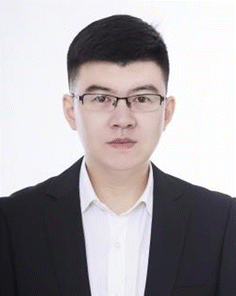Materials Horizons Emerging Investigator Series: Dr Yu Feng, Harbin University of Science and Technology, China
Abstract
Our Emerging Investigator Series features exceptional work by early-career materials science researchers. Read Yu Feng’s Emerging Investigator Series article ‘Ultrahigh energy storage performance of all-organic dielectrics at high-temperature by tuning the density and location of traps’ (https://doi.org/10.1039/D2MH00912A) and find out more about him in the interview below.
Yu Feng is an Associate Professor at Harbin University of Science and Technology, China. He got a doctoral degree from Harbin Institute of Technology. From February 2019 to February 2020, he was at Nanyang Technological University (Singapore) as a visiting scholar. Now he is a visiting scholar in the State Key Laboratory of Power System and Generation Equipment (Tsinghua University). He is also a member of the Special Committee on Power Capacitors of China Electrotechnical Society, a Youth Member of the Journal of Advanced Dielectrics Editorial Board, and a reviewer for Nature Communications, ACS Applied Materials & Interfaces and so on. He is presiding over the National Natural Science Foundation of China, Special support/general project of China Postdoctoral Science Foundation, Natural Science Foundation of Heilongjiang Province of China, etc. He has published 110 papers. They include in Chemical Reviews, Materials Horizons, Progress in Polymer Science, InfoMat, Nano Energy, and other well-known journals. His papers have been cited over 2800 times, and his h-index is 30.
Read Yu Feng’s Emerging Investigator Series article ‘Ultrahigh energy storage performance of all-organic dielectrics at high-temperature by tuning the density and location of traps’ ( https://doi.org/10.1039/D2MH00912A ) and find out more about him in the interview below:
MH: Your recent Materials Horizons Communication demonstrates the blending of small molecular semiconductors to modify dielectric materials. How has your research evolved from your first article to this most recent article and where do you see your research going in future?
YF: Our first article on energy storage polymers was published over four years ago.1 That article was aimed at trying to understand the influence of inorganic fillers with core–shell structure on the energy storage performance of polymer dielectrics. Since that article, we have been working on developing high energy-storage polymer dielectrics with different microstructures, such as gradient structures2 and organic–inorganic multilayers.3 Meanwhile, we also review the properties improvement that doping of 2D nanosheets into polymers may bring and the state-of-the-art progress.4 Until recently, we focused on the insulation and stability of polymer dielectrics at high temperatures and have tried to use machine learning as a complement to experiments to discover structure–property relationships and inversely design the polymer.5 We believe that the current research in the field of energy storage dielectrics is moving toward a non-filler direction.
MH: What aspect of your work are you most excited about at the moment?
YF: I am particularly excited that, in this work, we deepened the general understanding of the transport laws of carriers at high temperatures and high electric fields in polymer composite dielectrics. The experimental results predict that the carriers’ transport can be further optimized by controlling the defect distribution and have positive significance for probing the high-temperature carriers’ transport mechanism in polymer dielectrics. This work provides a new idea for adjusting the high-temperature energy storage performances of dielectrics.
MH: In your opinion, what are the most important questions to be asked/answered in this field of research?
YF: In my opinion, the most important and urgent question is how to improve the polarization while ensuring the insulation performance of the polymer composite dielectric. Besides, it is imperative to enhance the high-temperature stability of polymer dielectrics.
MH: What do you find most challenging about your research?
YF: Due to the extremely fast occurrence time, it is currently difficult to observe the breakdown process of polymer dielectrics, which affects the research of the breakdown mechanism of polymers. The direct characterization of carriers’ transport at high temperatures is difficult. The dielectric leakage current is very small, and achieving an accurate measurement is a great challenge.
MH: In which upcoming conferences or events may our readers meet you?
YF: Due to COVID-19, I can only attend some domestic conferences in China, including the annual meeting of Transactions of the China Electrotechnical Society and Proceedings of the CSEE. I really hope that COVID-19 will end soon. If so, I will be glad to attend foreign conferences and share my views.
MH: How do you spend your spare time?
YF: Usually, playing badminton with my friends and family, which helps to keep my health.
MH: Can you share one piece of career-related advice or wisdom with other early career scientists?
YF: Scientific research should stem from the initial curiosity of scientists about natural science.
References
- Y. Feng, Y. H. Zhou, T. D. Zhang, C. H. Zhang, Y. Q. Zhang, Y. Zhang, Q. G. Chen and Q. G. Chi, Energy Storage Mater., 2020, 25, 180–192 CrossRef.
- Y. Feng, J. P. Xue, T. D. Zhang, Q. G. Chi, J. L. Li, Q. G. Chen, J. J. Wang and L. Q. Chen, Energy Storage Mater., 2022, 44, 73–81 CrossRef.
- G. Liu, Q. Lei, Y. Feng, C. Zhang, T. Zhang, Q. Chen and Q. Chi, InfoMat, 2022 DOI:10.1002/inf2.12368.
- J. Li, X. Liu, Y. Feng and J. Yin, Prog. Polym. Sci., 2022, 126, 101505 CrossRef CAS.
- D. Yue, Y. Feng, X. X. Liu, J. H. Yin, W. C. Zhang, H. Guo, B. Su and Q. Q. Lei, Adv. Sci., 2022, 9, 2105773 CrossRef CAS PubMed.
| This journal is © The Royal Society of Chemistry 2022 |

